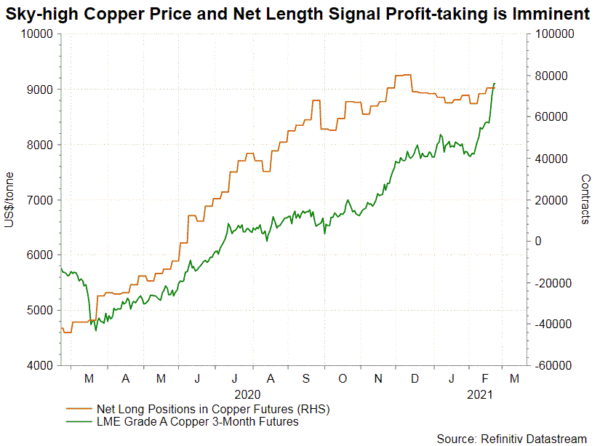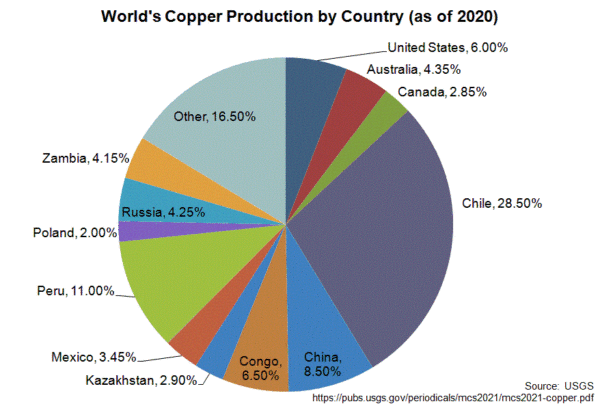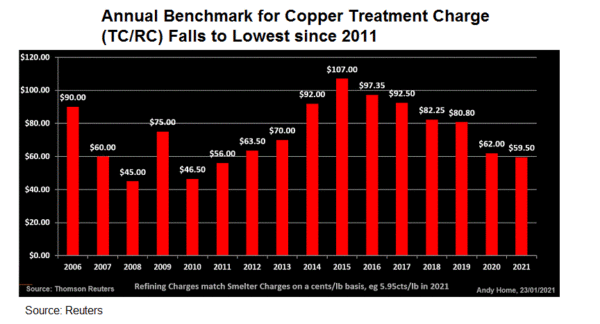Breaching the US9000/tonne benchmark, LME copper price skyrocketed to the highest level since 2011. The recent rally in copper price has been driven by hopes of stronger demand as global economic recovery accelerates and concerns over supply tightness in the metal. While the demand/supply looks positive for the metal in the longer term, recent strength appears overextended. As suggested in the CFTC commitment of traders report, net long positions of copper futures rose to 73 909 contracts in the week ended February 16, slightly below the record high of 80 039 contracts in December 2020. The elevated net longs suggest that profit-taking, thus price correction, is imminent.

Thanks to lockdown measures and vaccination, the global increase in the coronavirus cases has peaked in mid-January. Many countries, such as the UK, have rolled out plans to relax pandemic-related restriction measures. The market is hopeful that global economic activities would accelerate and return to pre-crisis level later this year. This should drive copper demand higher. For instance, Bank of America projects that global copper consumption would jump +6% this year, while Citigroup estimates that the market to see deficit in 2H21.
On the supply side, the preliminary data by the International Copper Study Group (ICSG) shows that world copper mine production fell by around -0.2% y/y to 18.7M tonnes in the first 11 months of 2020. The world’s copper output has likely recorded a second consecutive year of decline last year, compared with expectations that it would have increased. Production in Peru sank -13.5% y/y during the period, resulting from pandemic-related suspension, adverse weather and other operational disruption. Chile, the world’s biggest copper mine producer, also recorded decline in output during the period. The +2.5% growth in the first half was more than offset by the -2.9% contraction over July-November 2020. The country’s copper commission has recently estimated that output in December plunged -9.4% in December, suggesting that the full-year decline would be significantly. ICSG’s report also shows a +1.8% increase in global refined copper production from January to November. However, refined copper demand jumped +2.5% during the period, indicating that the sector is in also deficit.

In an October report, the agency projected that the world output would jump +4.6% in 2021. Logistic constraints, however, indicates that higher production is unlikely to alleviate the market tightness in the medium-term. Smelters in China have considered cutting production due to margin squeeze. China Copper, the head negotiator in the copper concentrates treatment and refining charges (TC/RC) benchmark for 2021, has secured a deal at $59.50 per tonne, the lowest since 2011. The company has recently announced plans to cut its refined copper production as the TC/RC charge, an indicator of refining margin, declines to a decade’s low. The benchmark, a reference in global supply contacts and a key indicator of the profitability of miners and smelters, signals that more smelters worldwide could trim production due to lower profitability.













